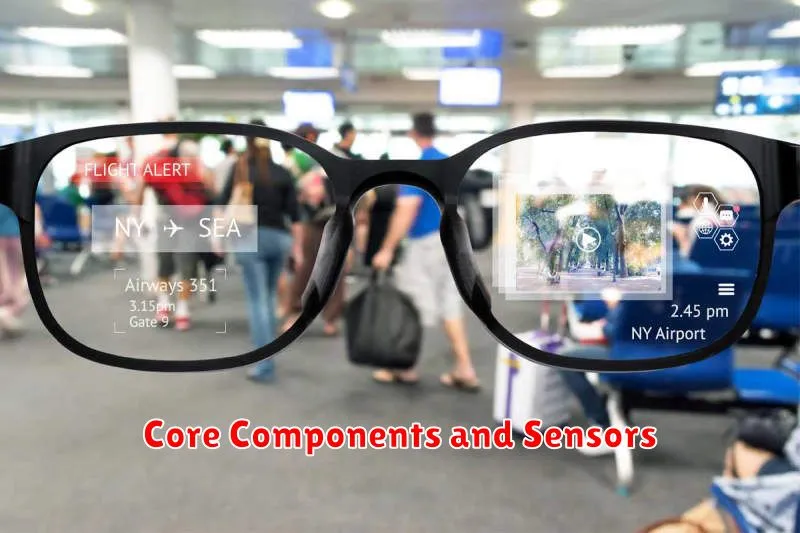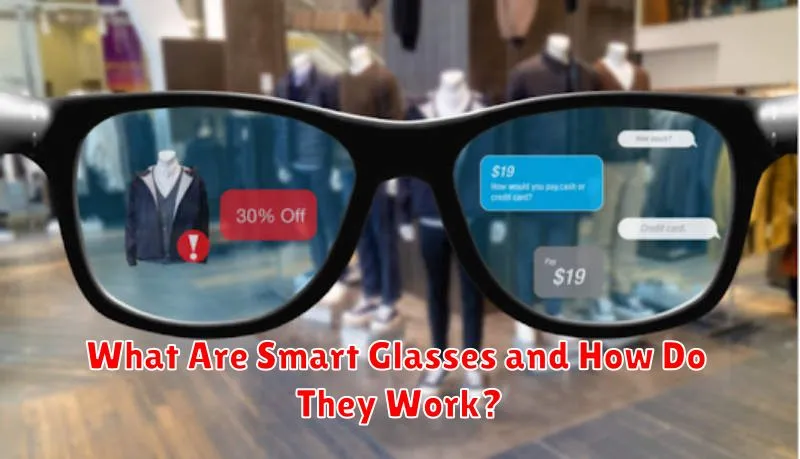Smart glasses are wearable computing devices that add information to the user’s field of vision. More than just fashionable eyewear, smart glasses offer a blend of augmented reality (AR) and practical technology, enabling hands-free access to information, communication, and various other functionalities. Understanding what smart glasses are and how their underlying technology operates is crucial to appreciating their potential to transform how we interact with the world around us. From navigation and notifications to photography and even gaming, the applications of smart glasses continue to expand, making them an increasingly relevant topic in the world of consumer electronics.
This article explores the core concepts behind smart glasses, breaking down their complex functionalities into understandable terms. We will delve into the technology that drives these devices, covering everything from sensors and processors to display technology and connectivity options. By understanding the “how” behind smart glasses, readers will gain a deeper appreciation for the innovative technology that empowers these devices to enhance our perception and interaction with the digital and physical realms. Furthermore, we will examine the varied applications of smart glasses across different industries, highlighting their potential impact on productivity, communication, and entertainment.
The Concept of Smart Glasses
Smart glasses are wearable computing devices that display information directly in a user’s field of vision. They often resemble traditional eyeglasses but incorporate advanced technology such as cameras, sensors, and miniature displays. This allows them to overlay digital content onto the real world, creating an augmented reality (AR) experience.
Instead of simply displaying information, smart glasses aim to contextualize and integrate it with the user’s surroundings. By utilizing sensors to understand the environment and the user’s actions, smart glasses can provide relevant information in real-time. This could include directions, notifications, or even real-time translation of foreign languages.
AR vs VR vs MR Explained
Understanding the differences between Augmented Reality (AR), Virtual Reality (VR), and Mixed Reality (MR) is crucial when discussing smart glasses. Each technology offers a unique experience by blending the real and virtual worlds in distinct ways.
VR creates a completely immersive digital environment, blocking out the real world. Users are transported to a computer-generated reality experienced through a headset.
AR overlays digital information onto the real world. Users see their actual surroundings with added computer-generated images or data, often viewed through smart glasses or a smartphone screen.
MR combines elements of both AR and VR, allowing digital content to interact with the real world. Users can see and manipulate digital objects as if they were physically present, creating a truly blended experience.
Core Components and Sensors

Smart glasses integrate various components and sensors to provide their enhanced functionalities. A central processing unit (CPU) acts as the brain, executing instructions and managing tasks. Memory (RAM) stores data temporarily, enabling smooth operation. Storage, often in the form of flash memory, holds the operating system and other data.
Key sensors include cameras for capturing images and videos, as well as for augmented reality overlays. Microphones enable voice control and communication. Motion sensors, such as accelerometers and gyroscopes, track head movements and orientation. Additionally, some smart glasses incorporate GPS receivers for location services, and ambient light sensors to adjust display brightness.
Popular Brands and Models
Several companies are leading the development and production of smart glasses. Google, with its early Glass prototype and subsequent Enterprise Edition, has been a key player. While the consumer version of Google Glass was discontinued, the Enterprise Edition found a niche in specific industries.
Vuzix offers a range of smart glasses, including models designed for enterprise and industrial use. Epson’s Moverio line also caters to professional applications. Other notable brands include RealWear and Everysight, each focusing on specific segments of the smart glasses market.
Use Cases in Daily Life
Smart glasses are becoming increasingly integrated into everyday activities. Navigation is a key feature, providing hands-free directions overlaid onto the real world. This is particularly useful for cyclists or pedestrians navigating busy city streets.
Real-time information access is another significant advantage. Quickly checking weather updates, viewing calendar appointments, or receiving message notifications without pulling out a phone streamlines daily tasks. Imagine instantly translating a menu in a foreign restaurant or identifying a landmark with a simple glance.
Smart glasses also find applications in fitness and healthcare. They can display workout metrics, monitor heart rate, and even provide coaching cues in real-time. In healthcare, these devices are being explored for assisting surgeons with complex procedures and providing remote expert consultations.
Privacy and Security Concerns
Smart glasses raise significant privacy and security concerns. The always-on cameras can potentially record individuals without their knowledge or consent, raising issues of surveillance and data misuse.
Data storage and access are also critical. Where is the collected information stored, who has access to it, and how is it protected from unauthorized access or breaches? These are crucial questions that must be addressed.
Furthermore, the potential for facial recognition technology integration raises concerns about unauthorized identification and tracking of individuals.

